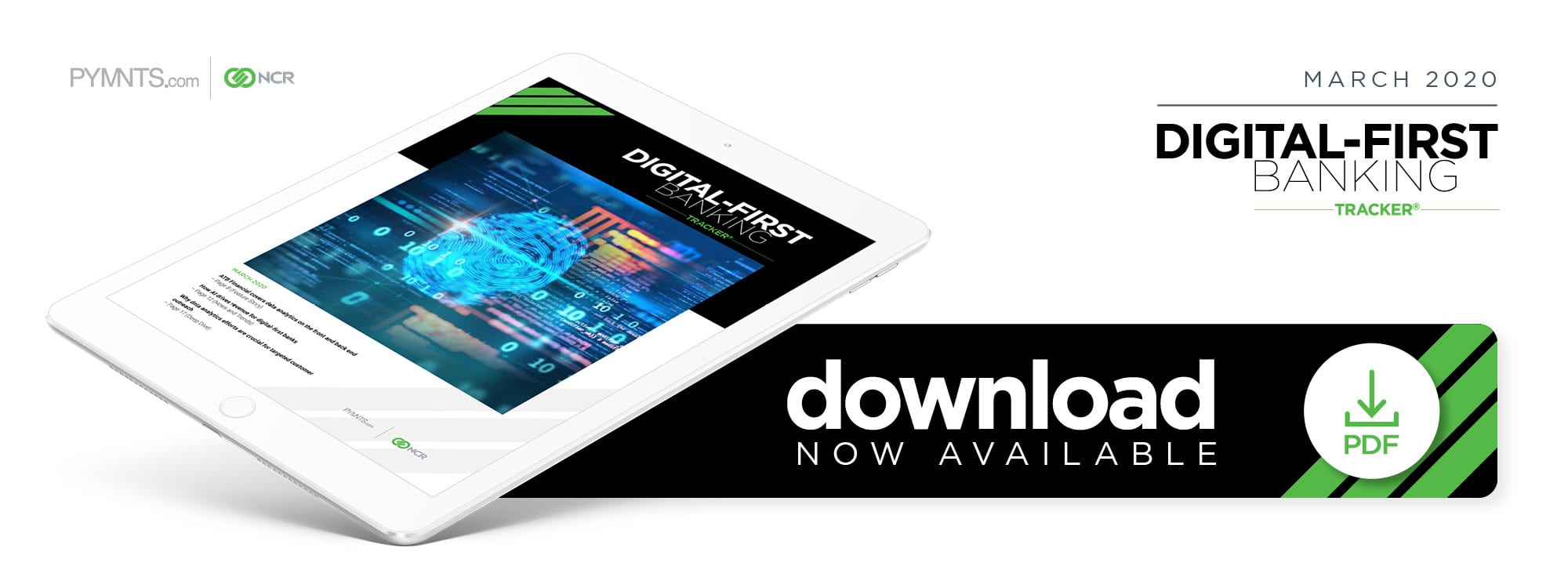Data is everything to digital-first banks.
Customer interactions offer financial institutions (FIs) invaluable information about consumers’ financial lifestyles as well as their needs as a whole, and banks that fail to harness these insights risk falling behind their data-savvy competitors.
One bank exploring data analytics is ATB Financial, which has 173 branches and 142 agencies throughout the Canadian province of Alberta and assets totaling more than $54.3 billion. Its recent digital push focused on gathering and using data to improve customer service.
“Banks have lots of data,” said John Tarnowski, ATB’s executive vice president, in a recent interview with PYMNTS. “I just don’t know if they have always been able to access it and use it in a way that actually will help the customer make a better decision.”
ATB has used many unique tools to gather customers’ data, including a voice-activated robot named Pepper. The data is used for numerous applications, including simplifying customer onboarding, deploying targeted marketing and protecting the bank against bad actors.
Advertisement: Scroll to Continue
Data for Customer Onboarding
One of the early tools of ATB’s data analytics program was its customer service robot, Pepper, which was developed in partnership with SoftBank Robotics America. Tarnowski said the banks’ robotic tools help automate customer onboarding, a surprisingly complicated process in which data analytics can have a huge impact. Even simple tasks such as updating addresses could be laborious on the back end, but automated systems drastically reduce the hours required to manually perform them.
“It’s very easy, from the customer’s perspective, to [give] that information, but where it becomes challenging is on the other side of it across the multitude of systems that we have, and ensuring that those all get transposed properly and updated properly,” he explained. “So, what we started to do is use the robotic commands and the learnings from Pepper, and we started to implement things like address changes through multiple systems.”
Data analytics operations like Pepper can automatically fill in information fields and reduce the amount of cross-referencing needed to ensure that data is consistent throughout banks’ systems. FIs can then leverage the data gathered during onboarding to target product and service offerings.
Data for Targeted Marketing
Having vast troves of customer data is not new for banks, but Tarnowski noted that it was the advent of sophisticated data analytics systems that allowed FIs to leverage these details and provide personalized offerings to customers. ATB’s program is still in its infancy, but the bank plans to expand the effort in the future.
“One of the things we’re just starting to test is how do you take the information that you know about the customer and get a bit more predictive and proactive at bringing things to them that would be relevant to them,” he said. “[That could be] insurance, credit cards or loyalty programs.”
Tarnowski stated that banks must provide targeted services without crossing the line from helpful into overbearing, as customers do not want to feel like “Big Brother” is watching. The Canadian government has a program in place to protect them, however.
“We call it the Canadian Anti-Spam Legislation, or CASL,” he said. “[It] requires us to have customer consent to not only talk to them digitally, but to be able to provide them with information digitally. What that [in turn] allows us to do is to demonstrate further awareness and further preference management for them.”
This requirement helps ATB build customer relationships by interacting with them only in their preferred mediums, allowing the bank to access more valuable data once it earns customers’ trust. This data can be harnessed to build the bank’s targeted marketing efforts in addition to protecting it and its customers from bad actors.
Data for Fraud Prevention
Fraud prevention is another major focus of ATB’s data analytics efforts. New digital banking channels allow bad actors to infiltrate banks’ systems and make off with valuable customer data, but closely monitoring this information can help banks determine who is legitimate and who is not.
“It’s one thing to have the data,” Tarnowski said. “It’s another thing to have the models that you can run the data through that tell you, this looks like it’s [suspicious], and this looks like it’s OK. We’re using data as a predictor of customer behavior, [seeing] if this doesn’t look like their traditional pattern or this doesn’t look like it’s coming from where they would be.”
Data analytics also enable ATB to more seamlessly engage customers in fraud prevention. Abruptly telling customers that transactions related to their accounts seem suspicious can be disruptive, but showing them data can help them determine what is occurring and bolster their trust.
“[Banks cannot make it too] onerous for the customer to tell you, ‘No, this isn’t me,’” Tarnowski explained. “[The data] gives us the opportunity to connect with customers and then partner with them to prevent fraud … and then to build that trust with [customers] and to make that fairly seamless.”
Fostering this trust can make customers even more proactive in fighting fraud. They are much more willing to alert FIs to suspicious activity if they know they will not be suspect, after all.
This positive feedback loop — in which customers trust banks to keep their data safe in exchange for allowing banks to leverage that information for personalized services — is key to any successful data analytics effort. Banks must ensure they do not betray this trust by allowing that data to fall into the wrong hands, thus ruining customer loyalty and ultimately diminishing data analytics programs’ viability.





